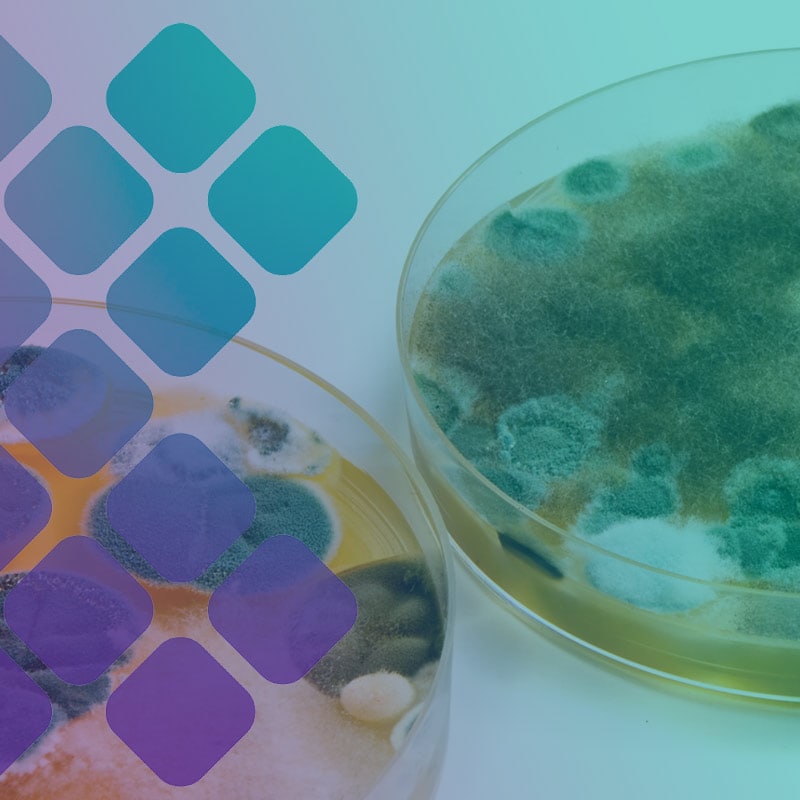Mycotoxin testing Services: Making certain Quality and Safety And Security in Your Supply Chain
Mycotoxin testing Services: Making certain Quality and Safety And Security in Your Supply Chain
Blog Article
How Mycotoxin Testing Assists Stop Contamination and Secure Food Products

Mycotoxin testing is an important method in the food industry, working as a frontline protection against contamination by hazardous toxins generated by mold and mildews. Through the application of sophisticated strategies like High-Performance Liquid Chromatography (HPLC) and Liquid Chromatography-Mass Spectrometry (LC-MS), food manufacturers can precisely discover and quantify mycotoxin levels in farming items. This proactive strategy not only ensures conformity with strict safety laws however likewise mitigates wellness dangers to customers. Additionally, regular screening fortifies brand name credibility and economic health and wellness by lowering contamination-related occurrences. So, exactly how specifically do these testing methods integrate into the more comprehensive food safety method?
Comprehending Mycotoxins
Understanding mycotoxins begins with recognizing that they are harmful additional metabolites created by specific mold and mildews, which can infect agricultural items. These metabolites are not important for the growth or reproduction of the fungis but can have extreme effects for human and animal health and wellness. Mycotoxins are generally located in staple plants such as corn, wheat, barley, and nuts, where they can proliferate under particular problems of dampness and temperature level.
There are several kinds of mycotoxins, each generated by various fungal species. Aflatoxins, produced by Aspergillus varieties, are amongst one of the most infamous, understood for their carcinogenic homes. One more significant group consists of ochratoxins, generated by Aspergillus and Penicillium species, which have nephrotoxic results. Fusarium types produce trichothecenes and fumonisins, both of which are related to numerous intense and chronic wellness problems.

Threats of Mycotoxin Contamination
The threats of mycotoxin contamination are complex, posturing substantial hazards to both food safety and security and public wellness. Mycotoxins, hazardous compounds produced by particular sorts of fungis, can infect a large range of agricultural items consisting of cereals, nuts, seasonings, dried fruits, and coffee. Once these contaminants infiltrate the food supply, they can lead to significant health and wellness issues such as liver damages, kidney failure, and also cancer. Vulnerable populaces, including children, the senior, and immunocompromised individuals, are specifically in jeopardy.
Financial effects are an additional major problem. Contaminated plants can result in considerable economic losses for farmers and food producers due to decreased returns and the need for expensive decontamination actions. International profession can be substantially hindered as countries apply strict mycotoxin laws to secure their populaces, leading to rejected shipments and strained trade connections.
Ecological factors such as climate adjustment exacerbate the risk of mycotoxin contamination. Variations in temperature and humidity can produce positive problems for fungal development, raising the likelihood of contamination events. Therefore, understanding and reducing these dangers are vital for ensuring the safety and integrity of global food materials.
Approaches of Mycotoxin Examining
Accurately determining mycotoxin contamination in agricultural products is important for protecting public health and maintaining food safety criteria. Numerous techniques are utilized to spot and quantify mycotoxins, each offering specific benefits and constraints.
High-Performance Liquid Chromatography (HPLC) is a widely used approach because of its high sensitivity and precision. It entails dividing mycotoxins from other materials in an example, allowing accurate metrology. Liquid Chromatography-Mass Spectrometry (LC-MS) incorporates liquid chromatography with mass spectrometry to provide thorough molecular info, making it specifically helpful look at these guys for identifying several mycotoxins at the same time.

Gas Chromatography-Mass Spectrometry (GC-MS) and Thin-Layer Chromatography (TLC) are also used, each with one-of-a-kind applications. GC-MS is effective for volatile mycotoxins, while TLC offers a simpler, cost-effective alternative for initial testing.
Advantages of Routine Evaluating
Regular testing for mycotoxins in farming items provides numerous advantages, considerably adding to public health and wellness and food security. By determining contamination early, regular screening assists avoid the circulation of toxic foods, thereby reducing the risk of mycotoxin-related illnesses among consumers. This aggressive technique not only safeguards human wellness however also boosts the total top quality of food products.
Regular testing likewise supports governing compliance. Various countries and regions have actually established rigid limitations for mycotoxin degrees in food and feed. Complying with these limits with regular screening ensures that distributors and producers fulfill legal criteria, thus staying clear of charges and profession barriers. Additionally, keeping conformity promotes consumer count on and brand name track record, which are crucial for market success.
In addition, regular mycotoxin testing can result in considerable financial advantages. Early discovery of contamination permits timely intervention, decreasing prospective losses from extensive contamination. Applying normal testing procedures can additionally minimize recall costs and related obligations, which can be economically ravaging.
In addition, normal screening gives valuable data that can inform much better have a peek here agricultural techniques and storage space problems. By recognizing patterns of contamination, producers can take on safety nets, consequently lowering future threats and adding to the sustainability of the food supply chain.
Executing Testing Protocols
Carrying out effective mycotoxin screening procedures is essential for ensuring the safety and security and high quality of farming products. Each stage needs to be scrutinized to determine where mycotoxin contamination is most likely to occur.
As soon as vital control points are determined, selecting proper testing techniques is important. Usual techniques consist of enzyme-linked immunosorbent assay (ELISA), high-performance liquid chromatography (HPLC), and mass spectrometry (MS) Each technique has its weak points and staminas; hence, choosing the right one depends on the certain mycotoxin being tested, the needed level of sensitivity, and available sources.

Lastly, incorporating the testing protocols into an extensive food safety management system is suggested. This improves traceability and enables quick see this corrective actions when contamination is spotted, thus securing the integrity of the food supply chain.
Verdict
Mycotoxin testing is crucial in avoiding contamination and protecting food products by enabling very early detection of hazardous contaminants generated by molds in agricultural products. Advanced approaches such as HPLC and LC-MS make sure compliance with security regulations and shield consumers from health dangers. Routine screening enhances brand reputation, financial security, and count on food safety and security by minimizing contamination-related losses and preserving high criteria in food manufacturing. Executing extensive screening methods is thus crucial for the sector's overall well-being.
Mycotoxin testing is a vital technique in the food sector, offering as a frontline protection versus contamination by damaging toxic substances created by molds. An integrated approach involving farming practices, storage space monitoring, and routine screening can alleviate the dangers associated with mycotoxin contamination, ensuring food safety and public wellness.
The threats of mycotoxin contamination are diverse, positioning significant threats to both food safety and security and public wellness.Routine testing for mycotoxins in farming items uses various benefits, dramatically adding to public health and wellness and food safety.Mycotoxin screening is vital in preventing contamination and protecting food materials by enabling very early detection of harmful contaminants created by molds in agricultural items.
Report this page